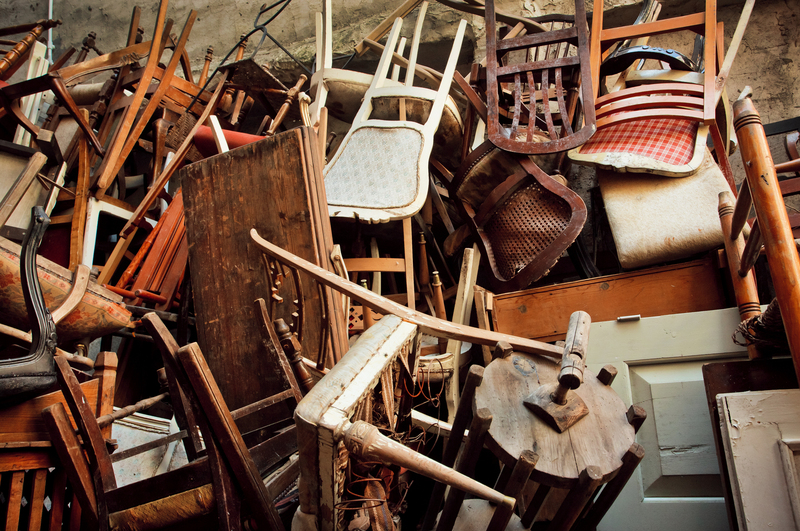How to Organize and Pack Your Home for a Stress-Free Move
Moving can be overwhelming, but with strategic planning and a well-organized packing approach, you can transform your relocation experience from stressful chaos to a streamlined, positive adventure. Whether you're moving across the street or across the country, understanding how to organize and pack your home is essential for a smooth, stress-free move.
Why Organization Is the Key to a Stress-Free Move
**Organizing your move** isn't just about putting things in boxes. It involves creating a comprehensive plan, knowing what to pack (and when), and ensuring your belongings arrive safely at your new home. By staying organized and methodical, you'll minimize last-minute stress, reduce the risk of lost items, and make settling into your new home effortless.
Benefits of Efficient Packing and Organization
- Reduces packing time
- Minimizes moving costs
- Protects fragile and valuable items
- Makes unpacking and arranging at your new home easier
- Ensures nothing important gets left behind

Step 1: Develop a Moving Checklist
Before you start packing, create a detailed moving checklist to keep yourself on track. This checklist should cover tasks from hiring movers to updating your address, and most importantly, deadlines for each step. Assign realistic timeframes for organizing, decluttering, packing, and cleaning.
What to Include in Your Moving Checklist:
- Research and book a reputable moving company (if applicable)
- Gather packing supplies: boxes, tape, bubble wrap, markers, labels
- Sort and declutter belongings room by room
- Arrange for donation pickups or garage sales
- Notify utilities and service providers of your move
- Pack items in stages, prioritizing infrequently used items
- Prepare a moving day essentials bag
- Clean both your current and new home
Step 2: Declutter for an Organized Move
One of the most important parts of a stress-free moving process is minimizing what you have to pack. Packing less saves time, money, and energy. Go through each room and decide what to keep, donate, recycle, or toss. Be ruthless! The less you have to move, the easier it will be.
Decluttering Tips for an Easy Move
- Sort items into labeled bins: Keep, Donate, Sell, Trash
- Take inventory of what you actually use and love
- Host a garage sale or list items online before packing
- Donate usable goods to local charities
- Safely dispose of hazardous materials or expired products
Remember: Decluttering not only organizes your move, but it also gives you a fresh start in your new home!
Step 3: Gather Quality Packing Supplies
Using the right moving supplies helps protect your belongings and keep everything organized. Invest in strong boxes, packing tape, bubble wrap, packing paper, and permanent markers for clear labeling. Specialized boxes--like wardrobe boxes or dish packs--can make packing certain items easier and more secure.
Essential Packing Supplies Checklist
- Sturdy moving boxes in various sizes
- Packing tape and dispensers
- Bubble wrap and packing paper
- Stretch wrap for securing furniture
- Furniture pads or moving blankets
- Ziploc bags for small parts or hardware
- Markers and colored labels
- Tool kit for assembling/disassembling furniture
Step 4: Establish a Packing System
To maintain control over your move, create an organized packing system. Designate rooms as starting points and pack one area at a time, working from least-used spaces (attic, storage) to most-used (kitchen, bedroom).
Organizational Tips for Packing Each Room
- Label every box with its contents and destination room
- Color-code boxes or use number systems for easy identification
- Pack heavier items at the bottom, lighter items on top
- Fill empty spaces with towels or linens to prevent shifting
- Keep similar items together for faster unpacking
Top Tip: Make a digital or written inventory of all boxes and their contents for reference when unpacking at your new home.
Step 5: Pack Room by Room for Maximum Efficiency
Adopt a "room-by-room" approach to ensure nothing gets overlooked. Tackle each area systematically, starting with rooms and items you use the least.
Packing Order for a Stress-Free Move
- Attic, basement, and storage closets
- Spare bedrooms and guest bathrooms
- Living room and dining room decor
- Bedrooms (pack off-season clothing first)
- Kitchen (keep a few essentials aside for last-minute use)
- Bathrooms (pack extra toiletries early, keep daily essentials out)
By following a logical order, you won't end up living in chaos or searching for necessary items at the last moment.
Special Tips for Packing Fragile or Valuable Items
- Wrap fragile items in bubble wrap or packing paper
- Use dish packs for kitchenware
- Pack electronics in original boxes if possible
- Label boxes "Fragile" and specify the contents
- Keep jewelry and important documents with you, not in the truck
Step 6: Prepare an Essentials Box
To enjoy a stress-free first day in your new home, prepare an essentials box or bag containing items you'll need immediately after arriving. This box should remain with you during the move, not in the moving truck.
What to Pack in Your Moving Day Essentials Box:
- Toiletries (toothbrush, toothpaste, soap)
- Change of clothes and pajamas
- Phone chargers and electronics
- Important documents (ID, passports, moving contracts)
- Snacks and bottled water
- Medications and basic first-aid supplies
- Basic cleaning supplies and paper towels
- Pet food and necessary pet items
Step 7: Label and Document Everything
Nothing derails a move faster than unlabeled boxes. Proper labeling is the secret to a truly organized move. Mark each box with its contents, destination room, and--if necessary--special handling instructions.
Advanced Labeling Ideas for a Flawless Move
- Use different colored labels or tape for each room
- Create a master inventory sheet for box numbers and contents
- Add "Open First" or "Fragile" stickers to critical boxes
- Take photos of electronics setups to reassemble them easily later
Step 8: Take Care of Utilities and Change of Address
Before your move, arrange for transfer or cancellation of utilities (gas, water, electricity, internet, cable) and update your address with the post office, banks, and any subscriptions. This step prevents lapses in service and ensures a smooth transition to your new home.
Step 9: Double-Check - Cleaning, Final Walkthrough, and Inventory
Before leaving your old home, perform a thorough cleaning and double-check all rooms, closets, and outdoor areas. Use your inventory list to confirm that everything has been packed and nothing is left behind. A final walkthrough reduces the chances of forgetting valuable items.
Step 10: Unpack Methodically for a Stress-Free Experience
Once you arrive at your new home, unpack with a plan.
Top Unpacking Strategies
- Place boxes in their designated rooms according to labels
- Start by setting up beds and unpacking bathroom and kitchen essentials
- Work through each room, tackling one area at a time
- Recycle or dispose of packing materials as you go
- Refer to your inventory list to ensure all boxes have arrived
Unpacking methodically allows you to settle in comfortably and return to your daily routine faster.
Bonus Tips for a Seamless and Stress-Free Move
- Start packing early - Give yourself plenty of time to avoid a last-minute rush.
- Ask for help - Enlist friends, family, or professional packers for assistance.
- Keep important phone numbers handy (moving company, landlord, utilities)
- Use up pantry items before moving to avoid food waste
- Take photos of valuable items and electronics wiring setups
- Stay hydrated and take breaks on moving day
Common Packing and Moving Mistakes to Avoid
- Leaving packing until the last minute
- Using poor-quality boxes that break under weight
- Forgetting to label boxes adequately
- Ignoring utility transfer timelines
- Underestimating the amount of work or time required
- Neglecting to keep important documents secure and accessible

Frequently Asked Questions (FAQs) About Organizing and Packing for a Move
What is the best way to organize packing for a move?
The best way to organize packing for your move is to follow a checklist, declutter before packing, use quality materials, label every box, and pack room by room. An established plan reduces stress and ensures you don't forget anything.
How early should I start packing for a move?
Ideally, start packing 4-6 weeks before your move--starting with items you use the least and working towards everyday essentials as moving day approaches.
How can I reduce stress while moving?
To reduce stress, start early, stay organized, keep a moving checklist, ask for help, and hire professionals for tasks like moving heavy furniture. Planning in advance and taking breaks during the process can make your move stress free.
What items should I keep with me during the move?
Always keep valuables, important documents, medications, electronics, chargers, a change of clothes, and essential toiletries with you during the move, along with any items you'll need immediately upon arrival.
Final Thoughts: Making Your Move Organized and Stress-Free
With a thoughtful strategy and a commitment to staying organized, moving doesn't have to be a source of anxiety.
By following the above guide on how to organize and pack your home for a stress-free move, your belongings will be safe, your transition will be smooth, and your new chapter will begin on the right note.
Remember: Preparation is the secret to a stress-free move. The more time and effort you put into organizing and packing, the less overwhelmed you'll feel--and the more you'll enjoy settling into your new home!



